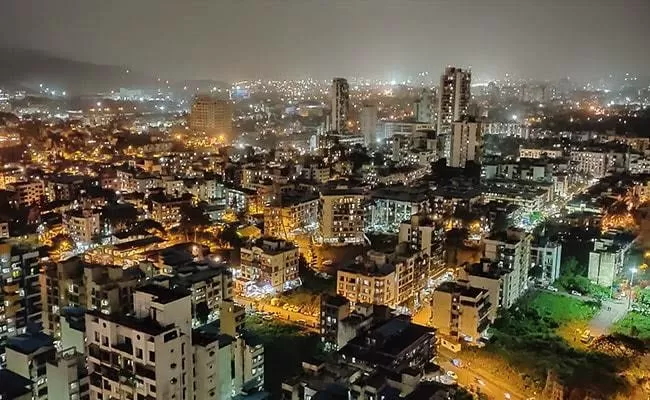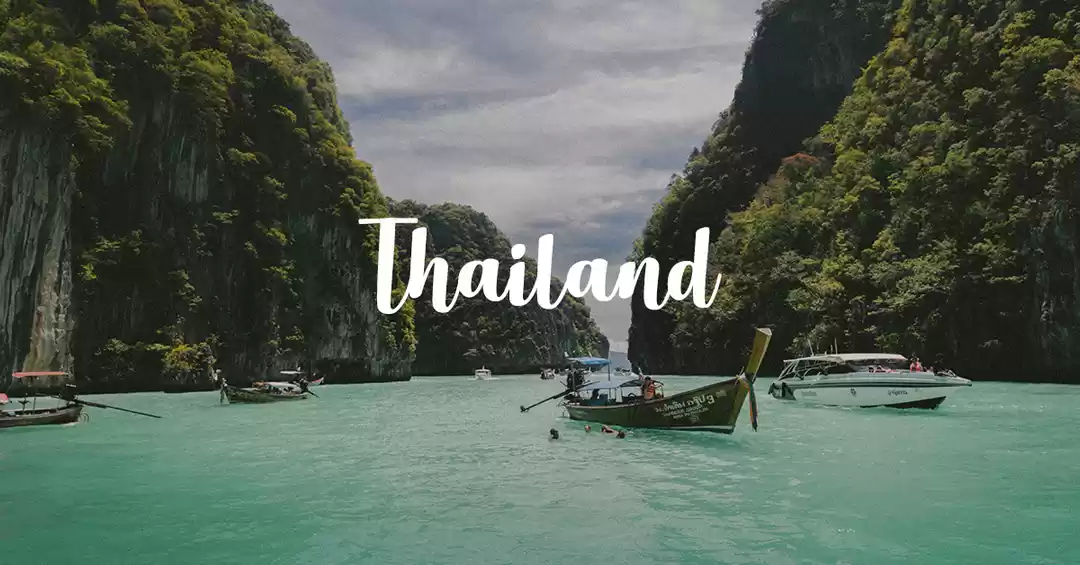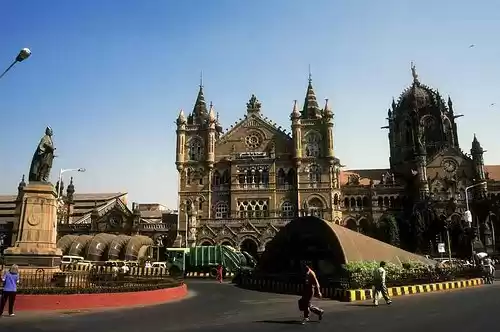
The City of Dreams"
Mumbai
Mumbai, the capital city of the Indian state of Maharashtra, is a spectacular paradox of chaos and hope, glamour and squalor, modernity and tradition.
Famously known as the City of Dreams, Mumbai – formerly known as Bombay - Mumbai is a beautifully blended melting pot of cultures and lifestyles.
The city soaks in everything into its fabric, making it its very own.
From upcoming actors struggling to make it big on the silver screen; from Bolly superstars to big industrialists to tribes of fisherman and slum dwellers, Mumbai is a city that proudly boasts of stories from different walks of human survival.
One of the main centres in the country of art, culture, music, dance and theatre, Mumbai is a dynamic, cosmopolitan city that has been running for years solely on the indomitable spirit of the Mumbaikars.









The 'City of Dreams'
Popularly known as the 'Maximum City', Mumbai, apart from being the capital of Maharashtra, is the commercial capital of India, owing to the infinite services and industries present here.
Besides being home to the largest cinema industry in the world, Mumbai, like Kolkata, has its own distinct culture.
If you don't believe it, visit the city during festivals like Diwali, Ganesh Chaturthi, Navaratri etc. and your doubts shall be dispelled for sure.
Be it the majestic charm of the colonial heritage, like the Taj Mahal Palace and Tower, or the indigenous beauty of places like Siddhivinayak Mandir, Wankhede Stadium to name a few, Mumbai is one city that never ceases to surprise you.
Mumbai is a literal paradise for any foodie, owing to the exquisite range of cuisine, be it the luscious Missal Pav or the lovely Parsi cuisine in some of the heritage cafes.
Being the one stop for all the dreams and ambitions in India, Mumbai is aptly called the 'City of Dreams'.



Nightlife in Mumbai
While a day in Mumbai is evidently abuzz with activities and the hustle and bustle of the crowds, even the nights here are far from quiet.
The city that never sleeps witness the nocturnal souls creep out into the night to take on the city; be it to drown the Monday blues or loosen up on a Saturday night.
Undoubtedly, the city with the best nightlife in the country.



History of Mumbai
The history of the city of Mumbai, or Bombay, began with the signing of the Treaty of Bassein between Sultan Bahadur Shah of Gujarat and the Portuguese, who were offered the seven islands that made up Bombay by the Sultan.
The islands were initially referred to by several different names, but collectively took the written name of Bombain.
The Portuguese built several churches and forts in the city during their reign.
With its growing strategic importance as a natural harbour, it attracted repeated British and Dutch interests.
In 1661, as part of the royal marriage alliance between Charles II of England and Princess Catherine of Portugal, the islands were given as dowry to the British by the Portuguese.
In 1668, the English leased 3 of the islands to the British East India Company, and a few years later, they shifted their capital from Surat to Bombay.
Bombay was thus the capital of the Bombay Presidency and quickly gained commercial and military significance.
The Portuguese finally left Bombay in the 1730s, following their defeat to the Marathas under Peshwa Baji Rao.
Following the Anglo-Maratha war and the signing of some treaties, the British drove out the Marathas and were able to establish their
majoritarian supremacy over Bombay.
Under the Hornby Vellard project, the islands were unified through significant land reclamation activities into a single landmass. Bombay was extremely active in the political sphere during India’s independence struggle and was part of the Quit India Movement & the Royal Navy Mutiny in the 1940s.



Largest Slum And The Most Expensive Building::::::
Nothing can perhaps be a better yardstick for measuring Mumbais diversity and disparity than the fact that the city is home to both Dharavi and Antilia - the former one of the largest slum settlements in the world, and the latter the most expensive residential property of the multi-billionaire businessman Mukesh Ambani.
Dharavi Once a mangrove swamp and a sparsely populated island, Dharavi in Mumbai is now the second-largest slum in Asia and the third-largest world in the world.
Founded in 1883 during the British rule, Dharavi Once a mangrove swamp and a sparsely populated island, Dharavi in Mumbai is now the second-largest slum in Asia and the third-largest world in the world.
Founded in 1883 during the British rule, Dharavi expanded rapidly due to rural migration and an explosion of factories in Bombay.
According to suggested estimates, the population of Dharavi is said to be between 300,000 to 1 million.
The citizens are multi-religious and multi-ethnic, who are engaged in various activities ranging from leather, textiles, pottery and even a growing recycling industry.
The informal economy of Dharavi is thriving and goods from Dharavi are exported to many parts of the world, and the total annual turnover from the economy is around USD 1 billion.
Despite many plans to resettle the population and develop the place, Dharavi still continues to be plagued by low sanitation and hygiene standards.
Antilia The extravagantly expensive home of Mukesh Ambani, one of the worlds richest businessmen, is located in South Mumbai.
Named Antilia, after the mythical islands of the same name, it is estimated to have a net worth of over USD 1 billion and is second only to the Buckingham Palace as the worlds most expensive residential property.
A daily staff of around 600 are reported to maintain the private residence for the Ambani family.
Embroiled in controversies over the legality of the land purchase since its inception, its tall architectural design was envisioned by the Chicago-based Perkins and Will, and it continues to attract both dubious criticism and envious wonder by the world.












Suggested Itinerary for Mumbai ::::
Day 1 - If you have reached Mumbai in the morning, get some rest and freshen up.
Then head for the first focal point of tourism in the city, i.e. Regal Cinema Circle, which leads to some of the most popular destinations in Mumbai, be it the famous Colaba Causeway, also known as Mumbai's Cultural Square, or the Gateway of India.
You should prefer to tour the Gateway complex in the evening as the scene is absolutely astounding.
Day 2 - The next day is perfect for an insightful tour of the city.
Catch the famous local train if you are feeling adventurous, or opt for a taxi and go straight for Koli fishing village at Cuffe Parade.
From the village, take a tour of the Fort District, which is the heart of finance in Mumbai.
Then go for a tour of the Mahalaxmi temple and the adjoining Haji Ali Dargah in the evening.
Day 3 - You can begin your day with a taste of Bollywood by heading to Maratha Mandir for the 11.30am show of the iconic movie, Dilwale Dulhania Le Jayenge.
Following that, go for a stroll to the Crawford Market via Dadabhai Naoroji Road, only 15 minutes away from the same, where you can get a vibe of the Victorian London market, without spending extra pennies! By evening, do go for a stroll or a drive to the famous Marine Drive, from where you can witness the charm of electric lighting in the form of Queen's Necklace.
At one end is also the famous Chowpatty beach, where you can gorge on delicious snacks that Mumbai offers, from bhelpuri to chaat to missal pav.
By the time you leave Mumbai on Day 4, you shall have packed a suitcase of enchanting memories along with your belongings.



Top Experiences in Mumbai ::::
1. Since Mumbai is situated right beside the Arabian Sea, there are various promenades where you just sit back and relax and feel the breeze on your face.
Marine Drive is one such promenade where you can sit with your feet dangling over the ledge, and enjoy a beautiful sunset against the backdrop of the roaring waves of the Arabian sea.
When in Mumbai, don't forget to visit Bandra, which is home to most of the Bollywood stars, and is a laid-back suburb which houses many bars and nightclubs where you can experience the best of Mumbai's nightlife.
2. Mumbai's local cuisine is a food lover's paradise, and the local street food comprising of items such as vada pav, pav bhaji, dahi puri, pani puri and kala khatta will pamper your taste buds without burning a hole in your pocket.
Being a metropolis, Mumbai is a shopping haven, and there is pretty much nothing that you won't be able to find here.
Street shopping in Mumbai is best experienced at Colaba Causeway and Linking Road, where you can buy everything from junk jewellery to shoes, bags and even fancy designer clothes.
3. If you want to soak in some of the city's reminiscent colonial feeling, start by taking a walk around the streets of South Mumbai, which is basically old Bombay.
South Mumbai is dotted with buildings that will make you feel like you've been transported back in time to the British era; the British influence on the architecture of buildings is very prominent in almost every building you come across.
4. The most iconic tourist spot in Mumbai has to be the Gateway of India, and this awe-inspiring structure is located right on the waterfront overlooking the Arabian Sea.
The majestic Taj Mahal Hotel, which is another famous Mumbai landmark, is directly opposite the Gateway of India, so you can spend an entire day at these two locations alone, immersing yourself in the marvellous history of this town replete in rich heritage










































